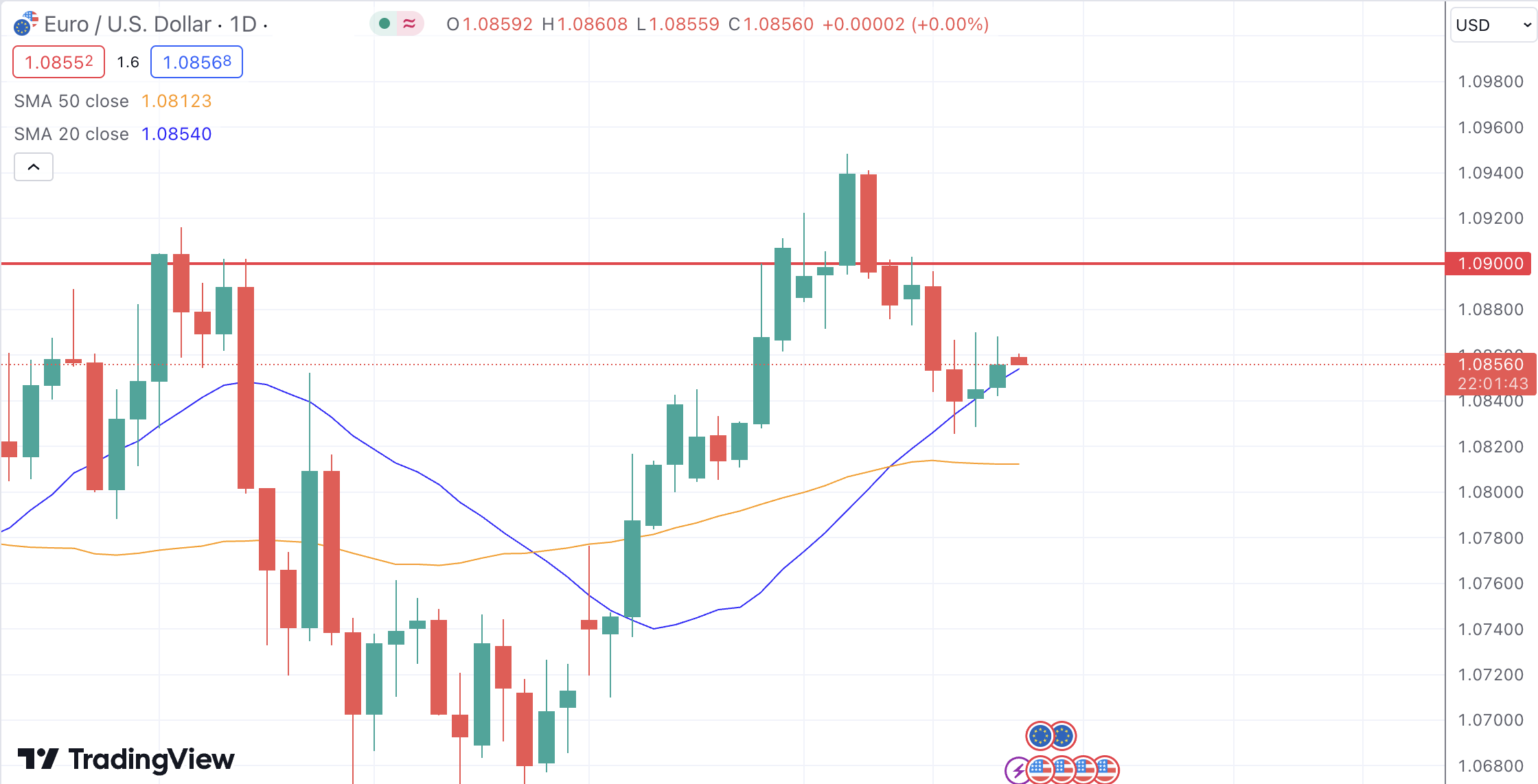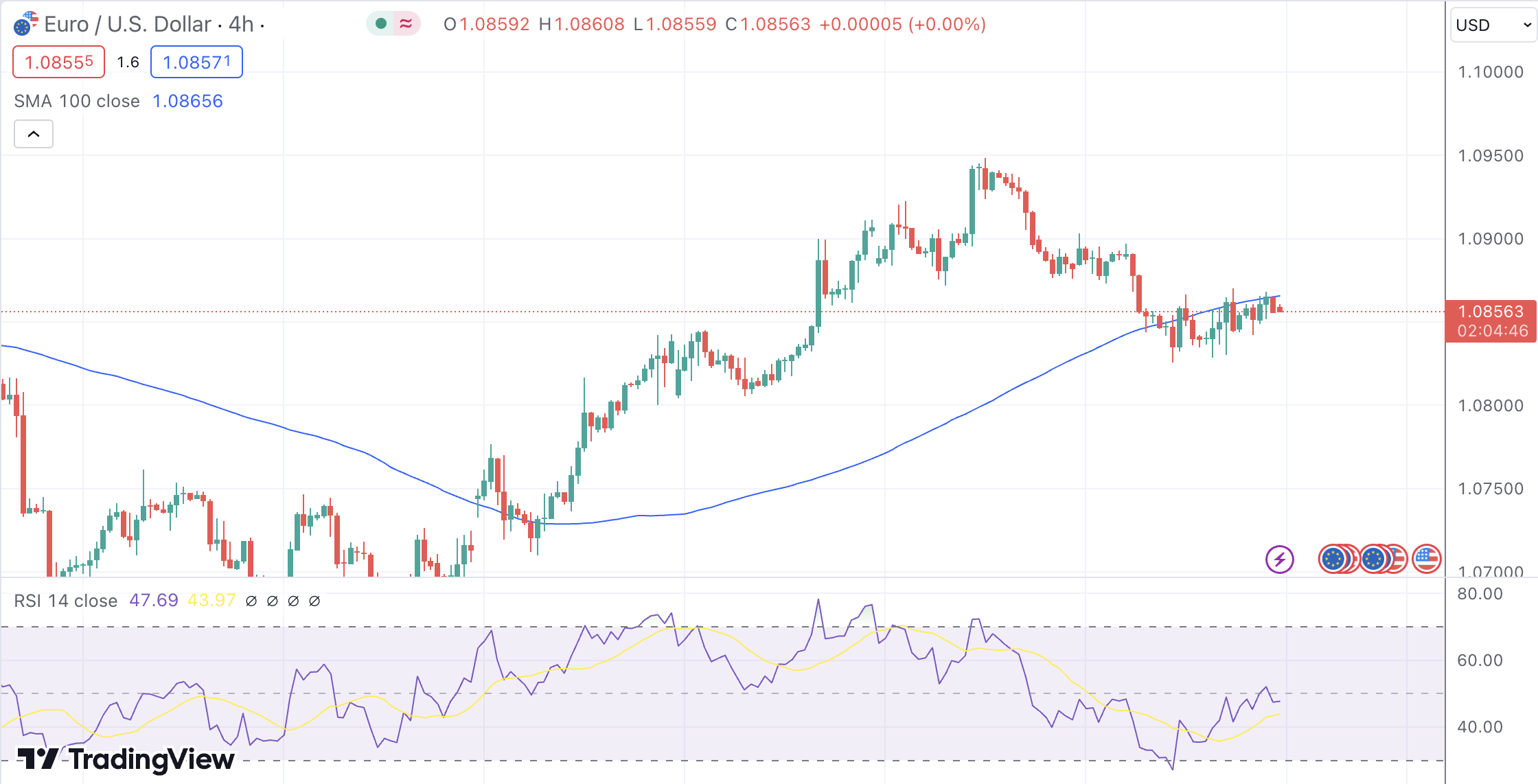Key Takeaways:
- US Economic Data: The upcoming PCE data will be crucial in shaping market expectations for the Fed’s policy decisions. Persistent inflation could support the US Dollar, while signs of easing inflation may increase hopes for a rate cut.
- Technical Levels: Support at 1.0800-1.0790 and 1.0740, with resistance at 1.0860, 1.0880, and 1.0900, will be key in determining the pair’s direction.
- ECB Communications: The ECB’s stance and any new economic data from the Eurozone will influence the Euro’s performance.
Market Dynamics and Recent Performance
The EUR/USD pair experienced relatively low volatility last week, with the Euro continuing to oscillate around the 1.0900 mark. Despite reaching new highs the previous week, the pair was unable to maintain upward momentum. This performance reflects a lack of decisive direction, influenced by mixed signals from economic data and central bank communications. The Euro struggled to find support as traders reacted to the European Central Bank’s (ECB) latest stance, which provided little new guidance on future monetary policy.
Technical and Fundamental Influences
From a technical perspective, the EUR/USD is showing signs of consolidation, trading in a tight range. The pair’s inability to reclaim the 100-period Simple Moving Average (SMA) for the second consecutive day, combined with a lower Relative Strength Index (RSI) on the 4-hour chart, indicates a lack of strong buyer interest. Support levels are seen at the 100-day and 200-day SMAs around 1.0800-1.0790, with further support at 1.0740 (Fibonacci 78.6% retracement) and 1.0700 (psychological level). Resistance is located at 1.0860 (100-period SMA), 1.0880 (Fibonacci 23.6% retracement), and 1.0900 (psychological level).
Fundamentally, the focus remains on US economic data and its impact on Federal Reserve policy expectations. The stronger-than-expected US GDP growth rate of 2.8% for the second quarter has provided support for the US Dollar, although the market remains cautious about future Fed rate cuts. The ECB’s decision to hold rates steady and the lack of clear guidance have added to the Euro’s challenges.
Looking Forward
In the upcoming week, market participants will closely watch key economic releases, including US Personal Consumption Expenditures (PCE) data and the Federal Reserve’s stance on interest rates. The PCE data, a critical measure of inflation, will influence expectations for the Fed’s policy decisions. Any indication of persistent inflation could reinforce the Fed’s cautious approach, supporting the US Dollar. Conversely, signs of easing inflation could revive hopes for a rate cut, putting pressure on the Dollar.
The ECB’s communications and any new economic data from the Eurozone will also play crucial roles in shaping the EUR/USD pair’s trajectory. Traders will need to remain vigilant for any shifts in risk sentiment, as these could lead to significant movements in the pair.



